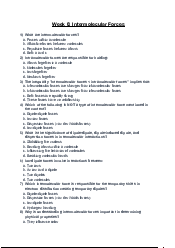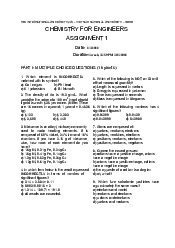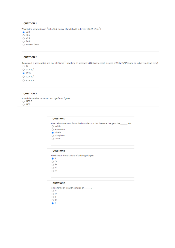


Preview text:
INTRODUCTION TO COMPUTING - IT064IU
LECTURE 5 – HOMEWORK
Deadline: Please check on Blackboard
Instruction: Please follow the steps:
1 – Write your answers clearly on white paper with a dark pen (blue or black). Typing
is NOT allowed. Remember to include your name and your student ID.
2. Take a photo of the answer pages then use software (Adobe Scan, Google Drive,
Notes, CamScanner, or any related tool) to group answers of more than one sheet into one PDF. How to:
- On iPhone: Use Notes on Your iPhone to Quickly Scan Documents https://youtu.be/16nwB3P78GQ
- On Android: Scan A Document with Google Drive https://youtu.be/2aQjW3RtRqI
3. Upload a single pdf file to Blackboard before the deadline
How to: https://youtu.be/SmRMftz5Jys 1/3 LECTURE 5 H – OMEWORK
Question 1. If, in a fixed partition memory management system, the current value of the base
register is 42993 and the current value of the bounds register is 2031, compute the physical
addresses that correspond to the following logical addresses: (10 points) a. 104 b. 1755 c. 3041
Question 2. If, in a dynamic partition memory management system, the current value of the
base register is 42993 and the current value of the bounds register is 2031, compute the physical
addresses that correspond to the following logical addresses: (10 points) a. 104 b. 1755 c. 3041
Questions 3 and 4 use the following state of memory
Question 3. If the partitions are fixed and a new job arrives requiring 52 blocks of main
memory, show memory after using each of the following partition selection approaches: (10 points) a. first fit b. best fit c. worst fit
Question 4. If the partitions are dynamic and a new job arrives requiring 52 blocks of main
memory, show memory after using each of the following partition selection approaches: (10 points) 2/3 a. first fit b. best fit c. worst fit
Question 5. Use the following PMT (5 points each)
a) If the frame size is 1024, what is the physical address associated with the logical address <3,555>?
b) If the frame size is 1024, what is the physical address associated with the logical address <3,1555>?
Use the following table of processes and service time for Questions 6 through 8
Question 6. Draw a Gantt chart that shows the completion times for each process using first-
come, first-served CPU scheduling. Calculate the turnaround time. (10 points)
Question 7. Draw a Gantt chart that shows the completion times for each process using shortest
job next CPU scheduling. Calculate the turnaround time. (10 points)
Question 8. Draw a Gantt chart that shows the completion times for each process using round
robin CPU scheduling with a time slice of 60. Calculate the turnaround time. (10 points)
Question 9. Describe how a process might move through the various process states. Create
specific reasons why this process moves from one state to another. (10 points)
Question 10. Distinguish between preemptive scheduling and nonpreemptive scheduling. (10 points) 3/3




